The consumption of poorly stored and spoilt chicken can lead to severe health complications, making it essential to store raw chicken products properly. Raw chicken in the fridge for 7 days is a hot topic of discussion, with varying opinions on whether or not it is safe for consumption. Many factors contribute to the safety of consuming chicken that has been stored in the fridge for an extended period, such as the temperature and environment of the fridge and the packaging and freshness of the chicken upon purchase.
In this article, we will delve into the considerations and precautions a consumer needs to make when storing raw chicken in the fridge for 7 days, ways to determine its freshness, and the risks associated with consuming it. Understanding these aspects is crucial to ensuring your family remains healthy and safe while enjoying their favorite chicken dishes.
How Long Is Raw Chicken Good In The Fridge?
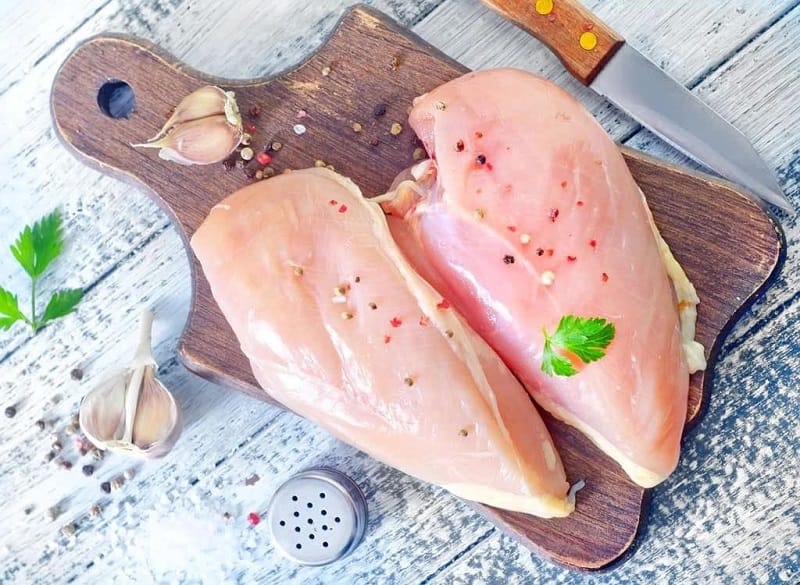
Raw chicken can last in the fridge for one to two days. This applies to raw poultry, such as turkeys or ducks. It is recommended to store raw chicken pieces in a leak-proof container to prevent juices from leaking and contaminating other foods in the fridge. Cooked chicken should be refrigerated in an airtight container and can last in the fridge for about 3-4 days.
However, it is essential to note that the longer chicken stays in the fridge, the higher the risk for food poisoning caused by bacteria like Campylobacter or Salmonella. It is always advisable to discard chicken that has started to fade in color, has a sour or acidic smell, or has become slimy before consuming it.
Following proper storage techniques and sticking to best practices for handling poultry can significantly minimize the risk of getting sick from consuming chicken.
What Is The USDA Guideline For The Maximum Number Of Days To Store Raw Chicken In The Fridge?
According to the USDA guideline, raw chicken should be stored in the refrigerator at or below 40°F and used within two days. Beyond that, the risk of bacterial contamination increases significantly, leading to potential foodborne illness.
While refrigeration can help preserve raw chicken for a short period, it is not a foolproof method and should not be relied upon for extended periods. To ensure safe consumption, follow the guidelines for cooking, storing, and handling raw chicken provided by the USDA Food Safety and Inspection Service. Properly cooked and stored chicken can provide a healthy source of lean protein for various meals.
Is Raw Chicken in Fridge for 7 Days OK?
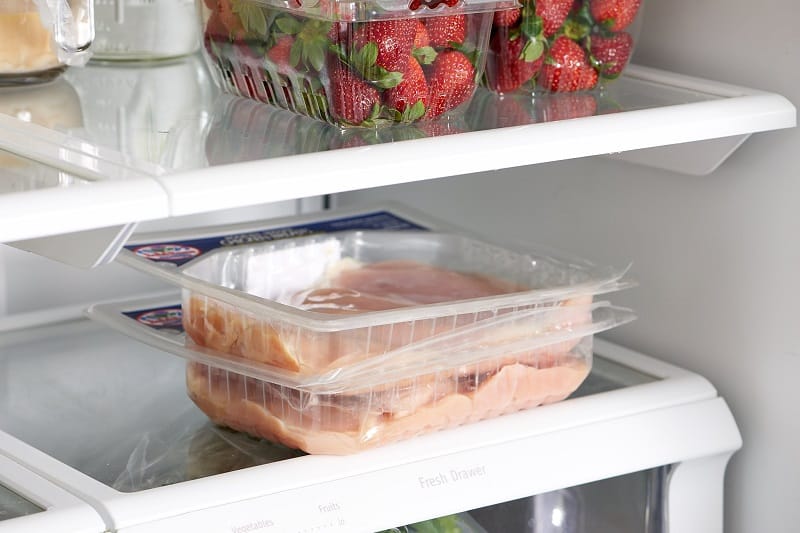
It is generally safe to keep raw chicken in the fridge for up to 7 days as long as it has been properly stored. The chicken should be kept at or below 40 degrees Fahrenheit, wrapped securely, and placed on the fridge’s bottom shelf to prevent dripping onto other foods. However, if the chicken has been left at room temperature for over 2 hours or shows signs of spoilage, it should not be consumed.
To ensure food safety, it is important to handle raw chicken carefully and to cook it to an internal temperature of 165°F. Additionally, if the chicken has not been used within the 7-day window, it should be frozen to extend its shelf life. It is always best to check the sell-by date on the packaging and to follow proper food storage guidelines for raw chicken.
Can Raw Chicken Last 5 Days In The Fridge?
Raw chicken should ideally be used within two days of purchase and kept in a sealed container or wrapped tightly with plastic or aluminum foil in the coldest part of the fridge. While storing raw chicken in the fridge for up to five days is generally safe, leaving it in longer increases the risk of bacterial growth.
The USDA advises against consuming raw chicken in the fridge for more than two days as it can lead to food poisoning. To ensure food safety, it is recommended to freeze raw chicken if it has not been used within five days of purchase. Any signs of discoloration or foul odors should be looked out for when using raw chicken, as it can be a sign of spoilage and should not be consumed.
Is Raw Chicken OK In The Fridge For 3 Days?
Raw chicken can stay in the fridge for up to two days before it should be consumed or frozen. However, some sources state that it can be safe to eat for up to three days if kept properly refrigerated and show no signs of spoilage.
It is important to be aware of any changes in color, odor, or texture which could indicate the chicken has gone bad. It is not recommended to consume raw chicken that has been left in the fridge for more than three days. Regularly checking and correctly storing raw chicken is essential to avoid potential health risks.
Read more:
- Can You Eat Raw Steak
- Can You Eat Bacon Raw
- Sell By Date On Chicken
- How Long To Boil Frozen Chicken
- How Long Can Frozen Chicken Sit Out
How Does Temperature Control Impact The Shelf Life Of Raw Chicken In The Fridge?
As someone always looking for ways to make food last longer in the fridge, I’ve been curious about the impact of temperature control on raw chicken’s shelf life. After doing some research, I’ve discovered some interesting facts and thought I’d share them with you.
First and foremost, it’s important to note that raw chicken is highly perishable and can harbor dangerous bacteria that can cause foodborne illnesses. Therefore, handling and storing it properly is crucial to minimize the risk of contamination.
The ideal temperature range for storing raw chicken in the fridge is between 35-40°F (1.7-4.4°C). This temperature range slows down the growth of bacteria and helps preserve the chicken’s quality and safety.
However, if the temperature in your fridge fluctuates above or below this range, it can significantly impact the shelf life of raw chicken. If the temperature is too high, bacteria can multiply quickly and cause the chicken to spoil faster. On the other hand, if the temperature is too low, the chicken can freeze and suffer from freezer burn, which can affect its texture and flavor.
It’s also important to note that the length of time raw chicken can safely be stored in the fridge depends on several factors, including the temperature, the age of the chicken, and the packaging. According to the USDA, raw chicken can be stored in the fridge for up to two days if properly stored at the recommended temperature range of 35-40°F (1.7-4.4°C).
In summary, temperature control plays a critical role in the shelf life and safety of raw chicken in the fridge. It’s essential to keep the temperature within the recommended range, monitor it regularly, and discard any chicken stored for too long or exposed to temperatures outside the recommended scope.
What Measures Can Be Taken To Prevent Cross-Contamination In The Fridge?
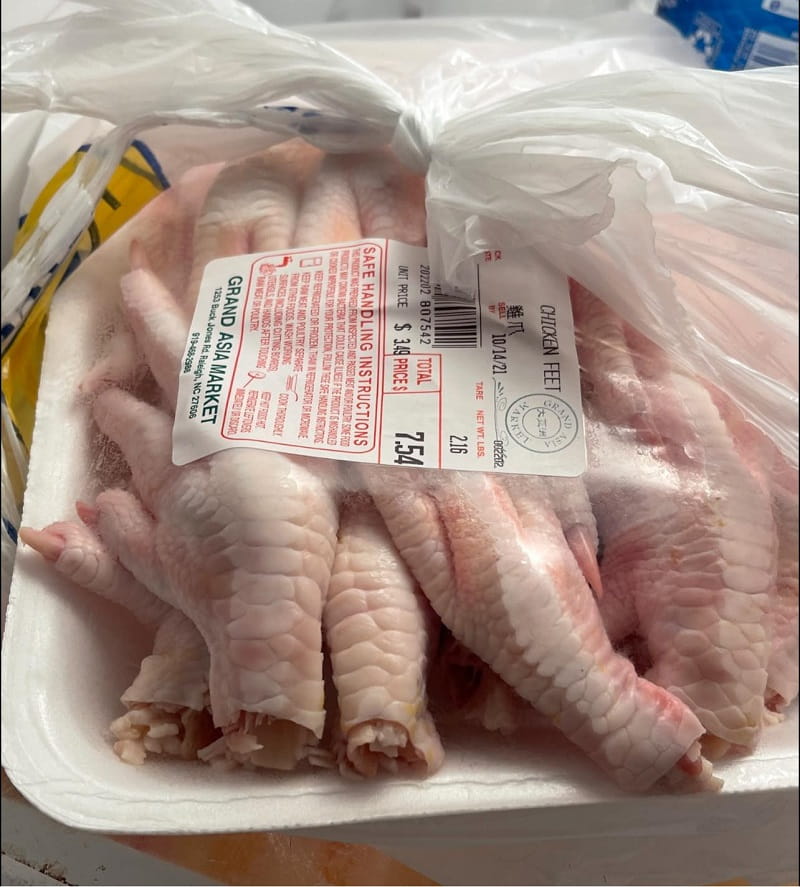
As someone conscious of food safety, I understand the importance of preventing cross-contamination in the fridge. Cross-contamination occurs when harmful bacteria from one food item spreads to another, leading to foodborne illnesses. Here are some measures that I take to prevent cross-contamination in my fridge:
- Separating raw foods: I always store raw meat, poultry, and seafood in separate containers or shelves from ready-to-eat foods such as fruits and vegetables. This prevents any juices from raw meats from contaminating other foods.
- Properly storing leftovers: I make sure to store leftovers in airtight containers and label them with the date they were cooked. This helps me track how long the food has been in the fridge and when it needs to be consumed or thrown away.
- Cleaning the fridge regularly: I clean my fridge at least once a month to prevent bacteria buildup. I remove all the food items, shelves, and drawers and clean them with warm, soapy water. After drying them thoroughly, I place them back in the fridge.
- Using separate cutting boards: I use separate cutting boards for raw meat and vegetables to prevent cross-contamination. I also make sure to sanitize the cutting boards after each use.
- Keeping the fridge at the correct temperature: I maintain my fridge at a temperature of 40°F or below to prevent the growth of bacteria. I use a thermometer to ensure that the temperature is consistent.
How To Ensure Raw Chicken Remains Fresh In The Fridge?
Raw chicken is an ingredient that requires extra attention, as it can easily spoil and cause foodborne illnesses. Today, I will share my tips and tricks on how to ensure raw chicken remains fresh in the fridge.
Store it in the right place: It’s crucial to store your raw chicken on the bottom shelf of the fridge, where it’s coldest. This will prevent any juices from dripping onto other foods and contaminating them. Also, keep the chicken in its original packaging or a tightly sealed container to avoid any exposure to air.
Keep the temperature low: The ideal temperature for storing raw chicken in the fridge is between 35°F to 40°F. Ensure your fridge is set to this temperature range, and avoid opening the door frequently. Every time you open the door, the temperature inside fluctuates, which can cause the chicken to spoil faster.
Use it within the right timeframe: Raw chicken can only last in the fridge for a few days, so it’s essential to use it within that timeframe. The FDA recommends using raw chicken within two days of purchase or one to two days after defrosting. If you’re not planning on using it within that timeframe, it’s best to freeze it.
Don’t wash it before storing: Contrary to popular belief, washing raw chicken before storing it in the fridge is not recommended. Washing the chicken can spread bacteria to other surfaces, leading to cross-contamination. Instead, please wait until you’re ready to cook the chicken before giving it a good rinse.
Cook it thoroughly: Cooking raw chicken to the right temperature is the most effective way to ensure it’s safe to eat. The internal temperature of the chicken should reach 165°F to kill harmful bacteria. Use a meat thermometer to check the temperature in the thickest part of the chicken.
How to Tell if Raw Chicken is Spoiled?
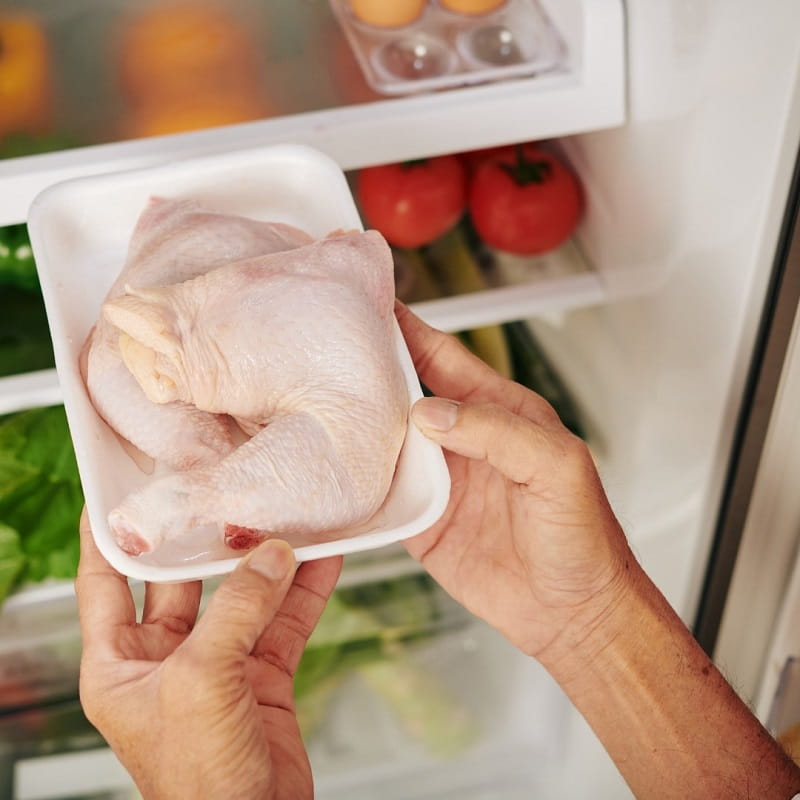
There are a few key signs to look out for when trying to determine if the raw chicken is spoiled.
First, pay attention to the smell. Fresh chicken should have a subtle, almost sweet scent. If it smells sour or like ammonia, it’s likely gone bad. Similarly, if there’s a strong, unpleasant odor when you open the packaging, that’s a bad sign.
Next, take a look at the color and texture. Raw chicken should be a pinkish color, with no gray or green spots. If there are any discolorations or odd hues, it’s best to toss them. The texture should also be firm and slightly springy – if it’s slimy or sticky, that indicates that it’s gone bad.
When in doubt, check the expiration date on the packaging. While this isn’t a foolproof method (chicken can still spoil before the expiration date), it’s a good starting point. And if you’re still unsure, it’s always best to err on caution and throw it out.
Health Risks Associated With Consuming Raw Chicken That Has Been Stored In The Fridge For Over 7 Days
Consuming raw chicken stored in the fridge for over 7 days can result in serious health risks.
Raw chicken has a high risk of containing harmful bacteria like Campylobacter and Salmonella, which can cause food poisoning. When chicken stays in the fridge for too long, bacteria can grow and multiply, making consuming it even more dangerous. Symptoms of food poisoning include nausea, vomiting, diarrhea, and fever, which can be severe in some cases and even lead to hospitalization.
Discarding any chicken stored in the fridge for over 7 days is essential, as consuming it can be risky and cause unpleasant and dangerous illnesses. Handling and storing chicken properly is always best to avoid health complications.
How Does Refrigeration Affect The Growth Of Bacteria In Raw Chicken?
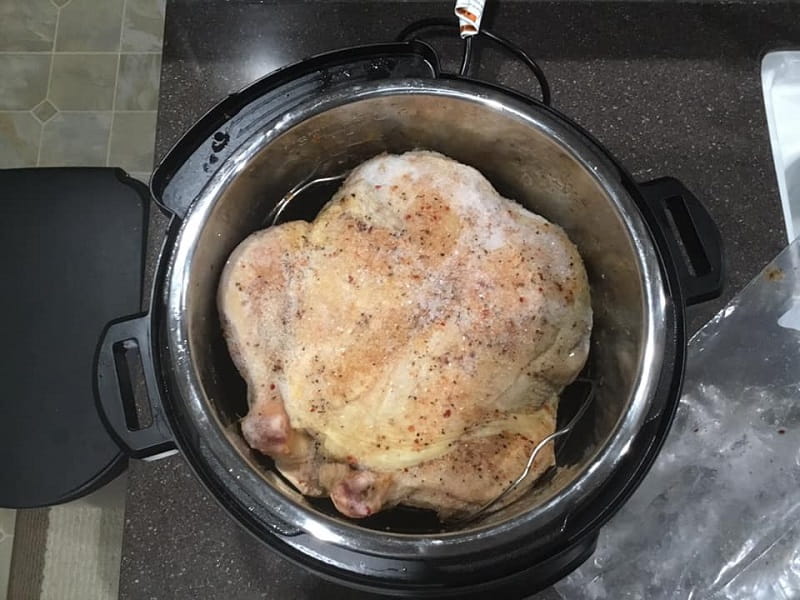
First, it’s important to understand that bacteria can grow rapidly at temperatures between 40°F and 140°F, a range commonly referred to as the “danger zone.” Like all raw meat, raw chicken contains bacteria that can cause illness if consumed. By refrigerating raw chicken at temperatures below 40°F, we can slow down the growth of these bacteria and keep our food safe.
However, it’s also important to note that refrigeration doesn’t completely stop bacterial growth. Some bacteria can still grow at temperatures as low as 32°F, though they grow much more slowly than at room temperature. This is why cooking the chicken to the appropriate temperature (165°F for poultry) is so important to kill any bacteria that may still be present.
Another factor to consider is how long raw chicken has been refrigerated. Even if it has been kept at the appropriate temperature, bacteria will still multiply over time. The USDA recommends storing raw chicken in the refrigerator for no more than two days before cooking or freezing it.
Additionally, it’s important to handle raw chicken properly before refrigerating it. Always keep it separate from ready-to-eat foods to avoid cross-contamination, and wash your hands and any surfaces that come into contact with the chicken with soap and hot water.
How to Choose Chicken Fresh?
I’ve been a fan of cooking with chicken for years, but one thing that always trips me up is choosing the freshest chicken at the grocery store. It can be tough to tell just by looking at the packaging, but I’ve learned a few tricks that have helped me pick out the best chicken time and time again. Here are my top tips for choosing fresh chicken at the grocery store.
- Look for a uniform color: When you’re examining the chicken, take note of the color. Fresh chicken should have a uniform pink or beige color throughout. If you notice any grayish or yellowish spots, it could be a sign that the chicken is starting to spoil.
- Check the packaging date: Most grocery stores will include a packaging date on the chicken. Check this date and choose the chicken that was packaged most recently. This will ensure that you’re getting the freshest chicken possible.
- Give it a sniff: It’s not the most pleasant thing to do, but giving the chicken a quick sniff can be a helpful way to determine if it’s fresh. If the chicken smells sour or off, it’s best to steer clear.
- Check for any signs of freezer burn: If the chicken has been frozen, check for any freezer burn. This can appear as white, grainy spots on the chicken and affect the taste and texture.
- Consider the packaging: Finally, consider the packaging when choosing your chicken. Opt for chicken sold in vacuum-sealed packaging, as this will help keep it fresh for longer. If the chicken is sold in plastic wrap or an open container, it may not stay fresh.
What Is The Proper Way To Store Raw Chicken In The Fridge To Ensure Freshness And Prevent Spoilage?
Here are some tips on how to store raw chicken in the fridge:
- Always store raw chicken in the coldest part of your fridge, usually the bottom shelf. This is important because chicken can quickly spoil at room temperature and must be kept at a cool temperature to slow down bacterial growth.
- Keep the chicken in its original packaging, or wrap it tightly in plastic or aluminum foil. This will help to prevent any juices from leaking out and contaminating other foods in your fridge.
- If you plan to store the chicken for over a day or two, consider placing it in a resealable plastic bag. This will provide an extra layer of protection against bacteria and help extend the chicken’s shelf life.
- Always wash your hands thoroughly before and after handling raw chicken. This will help to prevent the spread of bacteria and keep your kitchen and fridge clean.
- Avoid storing raw chicken next to other raw meats or foods ready to eat. This can lead to cross-contamination and increase the risk of foodborne illness.
What Are Some Best Practices For Safely Storing And Handling Raw Chicken?
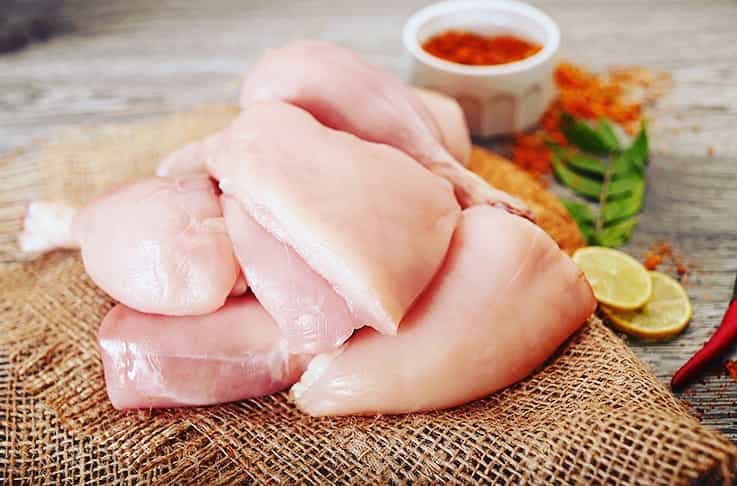
Raw chicken is a breeding ground for bacteria such as salmonella and campylobacter, which can cause serious illnesses. Here are some best practices for safely storing and handling raw chicken:
- Keep it separate: When you bring the raw chicken home from the grocery store, keep it separate from other foods in your shopping cart and grocery bags. Once you get home, store it on the bottom shelf of your refrigerator so that any juices that may leak won’t contaminate other foods.
- Use a cutting board: Always use a separate cutting board from other foods when preparing raw chicken. This will prevent cross-contamination and the spread of bacteria.
- Wash your hands: Before and after handling raw chicken, wash your hands thoroughly with soap and warm water for at least 20 seconds. This will help to prevent the spread of any bacteria.
- Cook it thoroughly: Chicken should always be cooked to an internal temperature of 165 degrees Fahrenheit. This will ensure that any harmful bacteria are killed.
- Store leftovers properly: If you have any leftover cooked chicken, store it in an airtight container in the refrigerator for up to four days. Make sure to reheat it to an internal temperature of 165 degrees Fahrenheit before eating.
How Can You Tell If The Chicken You’re Cooking Has Been Stored For Too Long?
Chicken stored for too long can pose serious health risks, so it’s essential to know if the chicken you’re cooking has been stored too long.
- Smell: One of the most reliable ways to tell if the chicken has been stored for too long is to use your sense of smell. Fresh chicken should have a mild scent that is not unpleasant or off-putting. If the chicken smells sour, rancid, or just off, it’s time to toss it.
- Appearance: Look at the chicken to see any signs of spoilage. Raw chicken should be light pink with white fatty pieces. If the chicken is gray, green, or has yellow fat, it’s a sign of spoilage and should be discarded.
- Texture: Check the texture of the chicken. If the chicken has slimy patches, feels tacky to the touch, or has a slimy texture when cooked.
- Mold: If you notice any mold growing on your raw or cooked chicken, it’s time to discard it immediately. Mold is a sign that the chicken has spoiled and should not be consumed.
- Crystallization: If the chicken has been stored above 40°F for too long, the proteins within the meat can crystalize, making it unsafe to eat. If you notice a grainy texture in the chicken, it’s likely gone bad.
- Date: Although not always a reliable indicator, check the expiration date on the package. Generally, the chicken will remain fresh for up to two days after its sell-by date. However, use your senses (smell, appearance, texture) as the primary indicators of spoilage.
Common Mistakes People Make When Storing Raw Chicken In The Fridge?
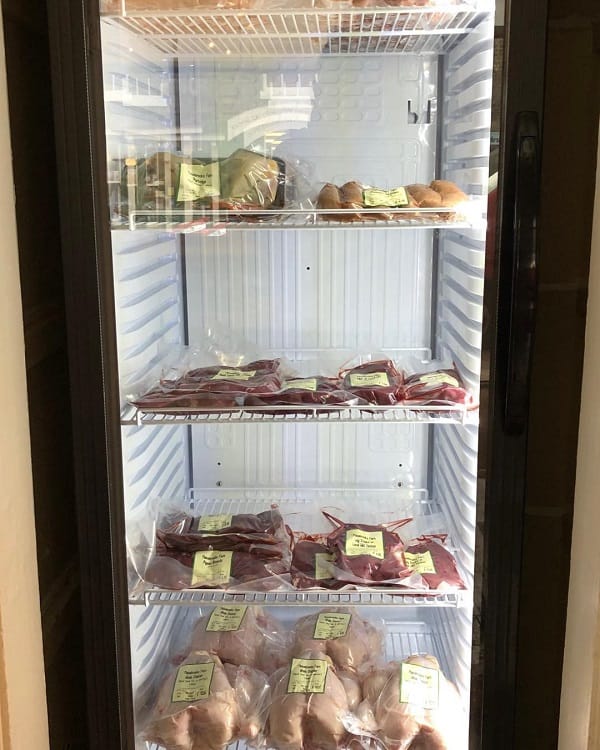
One of the biggest concerns regarding food safety is the storage of raw chicken. If not stored properly, uncooked chicken can be a breeding ground for harmful bacteria like salmonella and E. coli. Unfortunately, people make many common mistakes when storing raw chicken in the fridge. Now, I’ll cover some of these mistakes and how to avoid them.
Mistake #1: Not properly packaging the chicken
When you bring the raw chicken home from the grocery store, repackaging is essential to prevent cross-contamination. You should take the chicken out of the plastic wrap and place it in a clean, sealed container. It would be best if you also put the container on the fridge’s bottom shelf to prevent juices from dripping onto other foods.
Mistake #2: Storing the chicken for too long
Raw chicken should not be stored in the fridge for more than two days. After that, the risk of bacterial growth increases significantly. If you don’t plan on using the chicken within two days, it’s best to freeze it.
Mistake #3: Not properly cleaning the fridge
It’s important to regularly clean your fridge, especially if you store raw chicken in it. Bacteria can easily spread from one surface to another, so wipe down any surfaces the chicken may have encountered.
Mistake #4: Thawing chicken at room temperature
Thawing chicken at room temperature is a big no-no. This allows the chicken to reach a temperature where bacteria can grow rapidly. Instead, thaw the chicken in the fridge or the microwave.
Mistake #5: Not cooking the chicken to the right temperature
Even if you’ve stored the chicken properly, it’s important to cook it to the right temperature to kill any bacteria that may be present. The internal temperature of the chicken should reach 165°F (74°C) to ensure that it’s safe to eat.
FAQs About Raw Chicken in Fridge for 7 Days
Will Cooking Chicken Kill the Bacteria?
Cooking chicken will kill some bacteria, but it will not necessarily destroy all of them. While high temperatures do reduce the number of bacteria present in the chicken, not all bacteria have adaptable cell walls that can be destroyed by heat or chemicals.
Therefore, handling chicken properly before cooking is essential to reduce the number of bacteria present as much as possible. This includes washing hands, sanitizing kitchen equipment, and preventing cross-contamination with other foods. The correct internal temperature for chicken is 165 degrees Fahrenheit. It is also important to properly store and reheat the leftover chicken to prevent the growth of bacteria.
Can Proper Packaging And Storage Methods Extend The Shelf Life Of Raw Chicken In The Fridge?
Proper packaging and storage methods can extend the shelf life of raw chicken in the fridge. It is crucial to handle poultry products like chicken cautiously.
Storing chicken in a vacuum-sealed container effectively preserves its freshness, flavor, and quality. Generally, a vacuum-sealed chicken can last for three to ten days up to two weeks in the fridge, depending on factors like lack of air, uncontaminated, temperature, and proper sealing. Moreover, storing a vacuum-sealed chicken should be at the right temperature of 40°F or below. Additionally, storing chicken in butcher paper or wrapping tightly in plastic wrap or freezer paper before sealing it in a Ziploc bag can help extend its shelf life.
How Often Should You Clean And Sanitize Your Fridge To Prevent Cross-Contamination With Raw Chicken?
According to food safety guidelines, there is no standard for how often to clean a refrigerator. Still, a complete cleaning every couple of months can help prevent food spoilage and cross-contamination of harmful bacteria like Listeria.
To prevent cross-contamination with raw chicken, washing your hands, kitchen surfaces, and produce and keeping raw foods separate from ready-to-eat foods is important. Additionally, wiping up spills as they occur and paying attention to the dates on your food can also help prevent cross-contamination. It is recommended to store raw chicken in sealed containers or storage bags to avoid any cross-contamination.
Conclusion
In conclusion, raw chicken is a delicious and versatile ingredient that can be used in various ways. However, it’s important to handle it properly to avoid any potential health risks. Always refrigerate your chicken and use it within 2-3 days to keep it safe. While it may be tempting to stretch it for longer, it’s not worth the risk of getting sick. Remember, it’s better to be safe than sorry when raw chicken is in the fridge for 7 days.
References:
- https://www.healthline.com/nutrition/how-long-does-chicken-last-in-the-fridge
- https://www.americastestkitchen.com/articles/3154-how-to-pack-freeze-store-chicken
- https://www.foodsafety.gov/keep-food-safe/4-steps-to-food-safety
- https://www.fsis.usda.gov/food-safety/safe-food-handling-and-preparation/food-safety-basics/leftovers-and-food-safety
- https://www.medicalnewstoday.com/articles/what-happens-if-you-eat-raw-chicken

Hey readers! Chip Holland here, and I’m a Manager of this website. My passion for writing about it only matches my passion for BBQ. Follow my blog for mouth-watering recipes, tips, and tricks for the perfect smoke, grill, and BBQ. I’m sure you won’t be disappointed!
